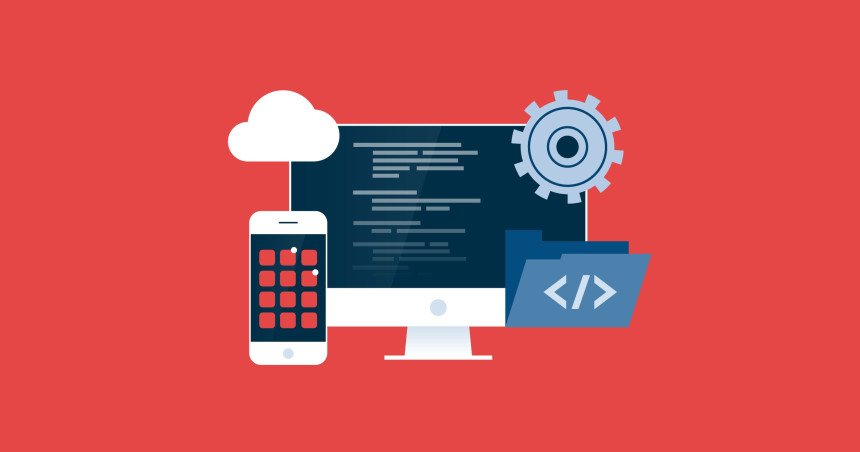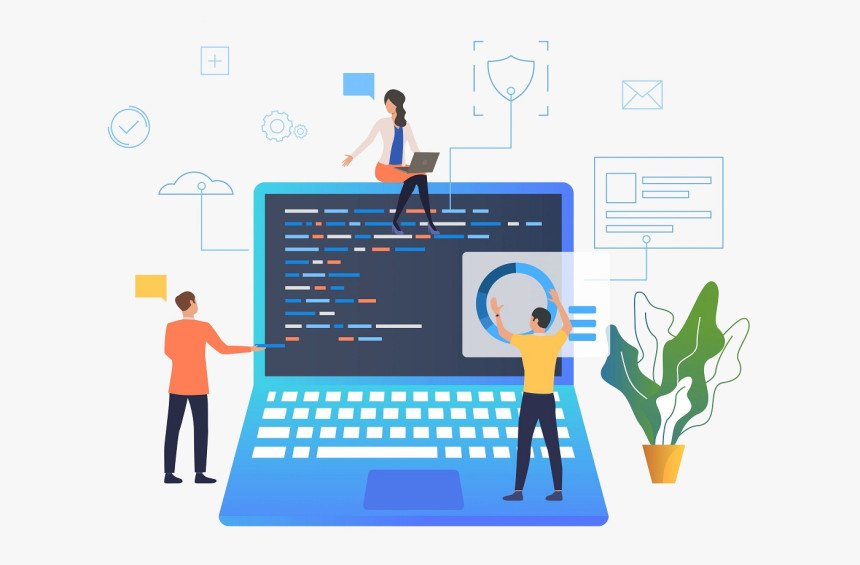
Unleashing the potential of the educational Software Field
Welcome to the exciting world of educational software, where technology and learning converge to create innovative opportunities for students, teachers, and institutions alike. With each passing day, advancements in this field are pushing the boundaries of what is possible in education. From interactive multimedia programs to virtual reality simulations, educational software is reshaping how we teach and learn.
Advancements and developments in the field

Advancements and developments in the field of educational software have revolutionized the way we learn and teach. With technology constantly evolving, there is a wide range of innovative tools and platforms available to enhance the learning experience.
One significant advancement is the integration of virtual reality (VR) and augmented reality (AR) into educational software. These immersive technologies allow students to explore virtual environments, bringing concepts to life in a way that traditional methods cannot replicate. From dissecting a frog in biology class to exploring historical landmarks from around the world, VR and AR provide an engaging and interactive learning experience.
Another notable development is adaptive learning software. This intelligent technology analyzes individual student performance data to personalize instruction based on their strengths and weaknesses. By tailoring lessons to meet each student's specific needs, adaptive learning software maximizes their potential for academic success.
Furthermore, cloud-based educational software has transformed collaboration among students and teachers alike. With cloud storage capabilities, assignments can be easily shared, edited, and submitted online. This not only promotes teamwork but also streamlines administrative tasks for educators.
Additionally, gamification has gained popularity as a powerful tool for enhancing engagement in educational settings. By incorporating game elements such as rewards systems or leaderboards into educational software, students are motivated to actively participate in their own learning journey.
Benefits of using educational software
In today's digital age, educational software has become an integral part of the learning process. With its wide range of features and functionalities, it offers numerous benefits for both students and educators alike.
One of the primary advantages of using educational software is its ability to enhance student engagement. By incorporating interactive elements such as games, simulations, and multimedia content, it captures students' attention and makes learning more enjoyable. This not only increases their motivation but also helps in retaining information better.
Another benefit is the flexibility that educational software provides. Students can access these tools anytime and anywhere, allowing them to learn at their own pace. Whether they are in a traditional classroom setting or studying remotely, they have the freedom to personalize their learning experience based on their individual needs.
Educational software also promotes personalized learning by adapting to each student's unique strengths and weaknesses. Through assessments and analytics, it identifies areas where students need additional support or challenge and provides targeted resources accordingly. This personalized approach ensures that students receive tailored instruction that meets their specific requirements.
Additionally, educational software fosters collaboration among students through online discussion forums and group activities. It enables them to work together on projects regardless of geographical barriers while developing essential skills like communication, teamwork, and problem-solving.
Challenges faced by the industry

The educational software field is not without its fair share of challenges. One major challenge is the rapid pace at which technology evolves. With new advancements and developments happening all the time, educational software developers must constantly adapt and update their products to stay relevant.
Another challenge is ensuring that the software is accessible to all students, including those with disabilities or limited access to technology. This requires careful consideration of design and functionality to ensure inclusivity.
Privacy and security concerns also pose a significant challenge in the educational software industry. As more personal data is collected from students, it becomes crucial for developers to prioritize data protection and adhere to strict privacy regulations.
Moreover, there can be resistance from educators who may be hesitant or resistant to incorporating technology into their classrooms. Convincing teachers of the benefits and providing adequate training can help overcome this obstacle.
Cost can be a barrier for many schools looking to implement educational software. Limited budgets may prevent them from acquiring these tools or accessing necessary hardware infrastructure.
Despite these challenges, innovative solutions are being developed every day by dedicated professionals in this field. By addressing these issues head-on through collaboration between educators, developers, policymakers, and other stakeholders, we can pave the way for unleashing even greater potential in educational software.
Strategies for unleashing the potential of educational software
1. Embrace User-Centric Design:
One key strategy to unlock the potential of educational software is to prioritize user-centric design. By putting teachers and students at the center, developers can create intuitive interfaces and functionalities that cater to their specific needs. This approach ensures that educational software is not only effective in delivering content but also enjoyable to use.
2. Foster Collaboration:
Another way to maximize the impact of educational software is by fostering collaboration among users. Incorporating features such as discussion boards, group projects, and interactive simulations can encourage students to actively engage with the material and each other, enhancing their learning experience.
3. Personalize Learning Paths:
Educational software has immense potential when it comes to personalizing learning paths for individual students. By utilizing data analytics and adaptive algorithms, educators can tailor content delivery based on a student's strengths, weaknesses, and learning speed. This personalized approach empowers learners by providing targeted support where needed while allowing them to progress at their own pace.
4. Continuous Assessment and Feedback:
To make educational software even more effective, incorporating continuous assessment tools is crucial. Real-time feedback allows both teachers and students to monitor progress, identify areas for improvement, and adjust instructional strategies accordingly.
5. Professional Development for Educators:
In order for educational software implementation to be successful, educators need proper training and ongoing professional development opportunities. Providing comprehensive training programs equips teachers with the necessary skills to effectively utilize these tools in their classrooms.
Future possibilities and innovations in the field
The field of educational software is constantly evolving, with new possibilities and innovations on the horizon. As technology continues to advance at a rapid pace, the potential for educational software to transform teaching and learning experiences is immense.
One exciting possibility for the future is virtual reality (VR) and augmented reality (AR) applications in education. Imagine students being able to explore historical landmarks or dive into immersive simulations that bring complex concepts to life. VR can create truly interactive and engaging learning environments that enhance comprehension and retention.
Another area of innovation lies in adaptive learning platforms. These intelligent systems use data analytics and machine learning algorithms to personalize instruction based on each student's unique needs, strengths, and weaknesses. By tailoring content delivery and providing targeted feedback, adaptive learning platforms can help students progress at their own pace while addressing individual challenges.
In recent years, there has also been a surge in gamification within educational software. Gamified elements such as badges, points systems, leaderboards, and rewards can motivate learners by making the process fun and interactive. This approach harnesses intrinsic motivation while promoting active engagement with the material.
Artificial intelligence (AI) holds tremendous promise for educational software development as well. AI-powered chatbots could provide instant support to students when they encounter difficulties or have questions outside of class hours. Additionally, AI algorithms can analyze vast amounts of data generated by users' interactions with instructional materials to identify patterns that inform more effective pedagogical approaches.
Furthermore, mobile devices continue to shape the future of education through apps specifically designed for learning purposes. With smartphones becoming increasingly prevalent among both educators and students alike, these portable tools offer convenient access to educational resources anytime, anywhere—a significant advantage over traditional classroom settings.
Conclusion
The field of educational software holds immense potential for transforming the way we learn and teach. With advancements in technology and continuous development in this field, educational software has become an indispensable tool in classrooms around the world.
The benefits of using educational software are numerous - it provides interactive and engaging learning experiences, personalizes education to meet individual needs, enables access to a wide range of resources, promotes collaboration among students and teachers, and enhances overall academic performance.
However, there are challenges that need to be addressed for the full potential of educational software to be unleashed. These include issues related to accessibility and affordability, concerns about data privacy and security, as well as resistance from traditional teaching methods.
To overcome these challenges and unleash the true potential of educational software, various strategies can be implemented. These include investing in infrastructure and technology resources for schools, providing training programs for educators to effectively integrate educational software into their teaching practices, fostering partnerships between edtech companies and schools or districts for better implementation support.





